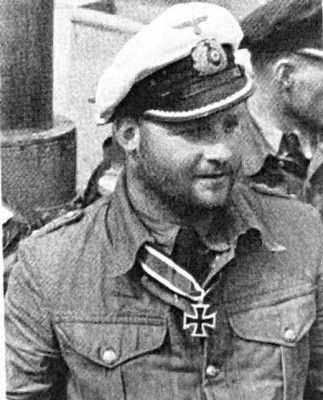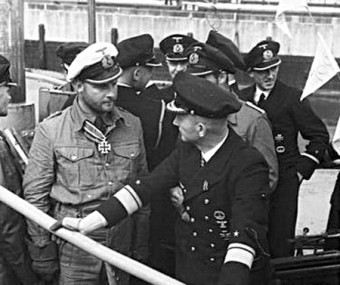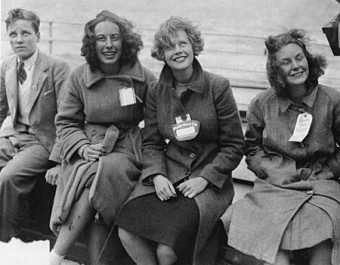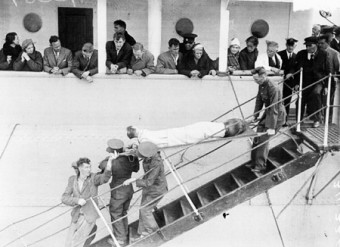Search Results for 'SS Athenia'
8 results found.
Galway was ready to receive SS Athenia survivors

In the early afternoon of Monday September 4 1939, Galway’s harbour master, Captain Tom Tierney, was amazed to be contacted by radio from a Norwegian freighter Knute Nelson. It was steaming south towards Galway with 430 survivors from the passenger liner SS Athenia, which had been torpedoed 250 miles north-west of Inishtrahull Island, off the Donegal coast. Many of the survivors needed medical attention. Was Galway in a position to offer aid and safety?
War victims come to Galway

At 11.15am on September 3 1939, Neville Chamberlain went on radio to announce that Britain had declared war on Germany. Hitler was still hopeful of a diplomatic resolution and to this end, he issued strict orders for U-boats to follow the Prize Regulations under which attacks on passenger liners were prohibited. Unfortunately, the first ship that was sunk by a U-boat was the SS Athenia, which was carrying 1,418 passengers and crew. She was about 200 miles off the west coast of Ireland at the time.
The Galwegians who fought against Hitler
Some 42,000 Irishmen fought for the Allies and against the Nazis in WWII - including a number of Galwaymen - and their stories are contained in a new book.
Three letters on my desk...

Last September I wrote a number of Diary entries on the wonderful reception that Galway extended to the survivors of the SS Athenia, torpedoed off the Donegal coast on September 3 1939, the very first day of the war. The ship was sunk by Fritz Julius Lemp, the commander of the U-30. The Athenia was obviously a passenger boat on its way with refugees from Europe to Canada. This wasn’t the start to the war that the German government wanted. Initially it denied that any of its submarines sank the Athenia, and suggested that it was sunk by the British on orders from Winston Churchill in the hope of getting America into the war.
The man who sank the SS Athenia

While Galway was caring for some of the survivors of the SS Athenia, torpedoed off the Donegal coast on September 3 1939, America, Britain and Canada unleashed a vitriolic attack on Germany for sinking a passenger ship. Included among her 1,418 passengers and crew were more than 300 Americans. A total of 117 people were killed, some unfortunately as they were being lifted from the sea by the rescue boats including the Knute Nelson (which had brought 430 survivors into Galway), and three British warships, the HMS Electra, HMS Fame and the HMS Escort, which had rushed to the scene. Among the dead were 28 American citizens.
Galway’s ‘splendid human spirit’

The people of Galway were shocked and excited by the arrival of 430 survivors who were brought ashore from the Athenia which was sunk by torpedo off the Donegal coast only hours after war was declared on September 3 1939. The town was galvanised into action. An impressive and practical plan was put into place to receive the survivors, to ensure they were comfortably accommodated, and to care for the wounded. There were 10 stretcher cases, numerous minor injuries, and distressed children. The passengers, who included Americans and Canadians, and refugees fleeing a deteriorating political situation in Europe, were bound for Montreal.
Galway was ready to serve...
On the evening that France and Britain declared war on Germany, September 3 1939, the 13,500-ton liner SS Athenia, chartered by the Cunard Line, and bound for Montreal with 1,418 passengers and crew was torpedoed, without warning, 250 miles northwest of Malin Head in the North Atlantic*. The following day the Norwegian vessel, Knute Nelson, was steaming towards Galway with 367 shocked and injured survivors, and asked that the city be prepared to receive them. Other survivors were picked up by British naval vessels and brought elsewhere for treatment, but in total 112 passengers and crew were killed in the attack, 28 of them Americans sailing for home as war was declared in Europe.
The sinking of the Athenia

The Second World War had only started for 10 hours, and the passenger liner Athenia was steaming across the Atlantic on its way to Montreal from Glasgow. It was 20.00 hours, on smooth seas, and many of the adults on board were preparing to eat dinner while some were putting their children to bed. Some others of the 1,103 passengers were relaxing on deck or in the lounge. There were 305 crew on board.

